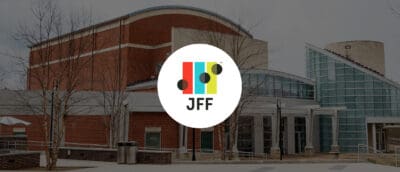

Public Colleges Can’t Wait Long to Face Post-COVID Challenges
March 30, 2020
At a Glance
Higher ed leaders trying to serve the needs of vulnerable students must also look ahead to a trio of challenges in a post-pandemic world.
Leaders of our nation’s two- and four-year public colleges are rightly focused on putting out educational fires for the foreseeable future. They are doing their best to support the safety of students, faculty, and staff; make online classes run smoothly; and confront imminent financial threats to operating their institutions.
But soon a pivot will be paramount. Public-college leaders quickly must turn to longer-term planning.
COVID-19 is already changing the way students experience higher education. And when the pandemic loosens its grip, it’s almost certain that we’ll be in the middle of the first recession since 2008. At that point, college leaders will face a new set of problems that require thinking differently about everything they do. The shift will be especially important for leaders of our open-access institutions, which serve the vast majority of the nation’s low-income learners and people of color.
The three immediate challenges that college leaders will need to address once the worst of the epidemic passes and the recession enters full swing are:
- Meeting the new expectations of millions of learners for online education and hybrid learning options.
- Guiding students to make far faster connections to work.
- Helping students navigate new ways to finance their educations.
Make High-Quality Online Learning the New Normal
First, there may be a surge in college enrollment, as typically happens when jobs disappear during a recession. But potential workers and students will not be expecting to enroll in the same types of institutions that they did before the COVID-19 outbreak. An unprecedented number of the 11 million students enrolled in community college had to abruptly switch to online learning to finish out their semesters. And because of social distancing rules, students were forced to conduct not only their learning online, but also their personal business, including shopping and using social media to engage with their friends and families. As these students and displaced workers get accustomed to spending large portions of their lives online, it is highly likely that they will expect to enroll and continue their educations online. For them, online learning will be the new normal.
Still, there is work to do to ensure that all students, particularly those who are academically underprepared, succeed in digital learning environments. With the majority of classes switching to online and hybrid models, which combine in-person and online learning, there is an unprecedented opportunity to see what works for students who have historically been underserved by online learning modalities—and to make improvements.
There is work to do to ensure that all students, particularly those who are academically underprepared, succeed in digital learning environments.
Create New Ways for Colleges and Employers to Work Together
Second, COVID-19 and the expected recession will usher in a new urgency to integrate postsecondary education and work. Learners will want to find jobs as quickly as possible in the aftermath of the pandemic and recession. Before the virus outbreak, a stunning 80 percent of community college students worked—39 percent of them full time. For the students who are able to find jobs, work and learning will need to occur at the same time. College leaders will need to collaborate with employers in creating new ways to increase student access to paid, work-based learning opportunities, including apprenticeships, co-ops, and internships as the economy recovers.
As we return to whatever “normal” life becomes after the crisis, people will need jobs and employers will need skilled workers, opening the door to more college-employer partnerships. College leaders will need to be flexible by adding entry and exit points into credential pathways that will allow learners who are working to pause, stop, or restart their educations as they toggle between education and skills acquisition and work. The conventional credential pathway, where learning comes first, followed by getting a job upon graduation, won’t be feasible in the new economic reality of many Americans.
If there is a recession, college leaders will face a new set of problems that require thinking differently about everything they do.
Find More Creative Ways to Pay for College
Third, huge numbers of learners will want to enroll in community college because they have lost jobs and can’t find work during the recession. These students will be in extremely fragile financial condition and won’t have the money to pay for education and training.
Gig economy workers and hourly workers employed in businesses that were closed during the pandemic are among the many Americans who will be strapped for cash. College leaders will need to be prepared to help potential enrollees explore new and innovative ways to pay for college. There is a critical need to develop new ways of financing postsecondary education and training. Innovative use of the Pell Grant, including short-term Pell Grants pegged to quality standards, income share agreements, paid work-based learning opportunities, and lifelong learning accounts are all viable methods of financing to explore.
In times of crisis, it is understandable to want to return to normal and resume fighting the battles we were fighting before the crisis struck. But public college leaders must shift their thinking from addressing just the perennial challenges facing open-access institutions to the new, broader set of challenges that the sector will face post-COVID-19 and in the middle of a recession—even as they rethink how to finance their operations. An influx of cash from a recession-induced enrollment spike or an economic stimulus will finance business as usual or provide capital to embrace new ways of providing education and support services. The choice is clear.
Related Content


Postsecondary Network
Reforming math in Florida, ensuring equity in Washington, boosting student support in Michigan, partnering with the workforce system in New Jersey—JFF’s renowned network advances policies and practices that help all students attain high-value credentials. Reforming…

An Equitable Recovery: Our Shared Responsibility
March 25, 2020
Education
Accelerating our education pathways systems toward equitable economic advancement. Today’s education ecosystem must meet the needs of today’s learners. This means learner-centered outcomes, pathways between education and careers, and policies and practices that support both…